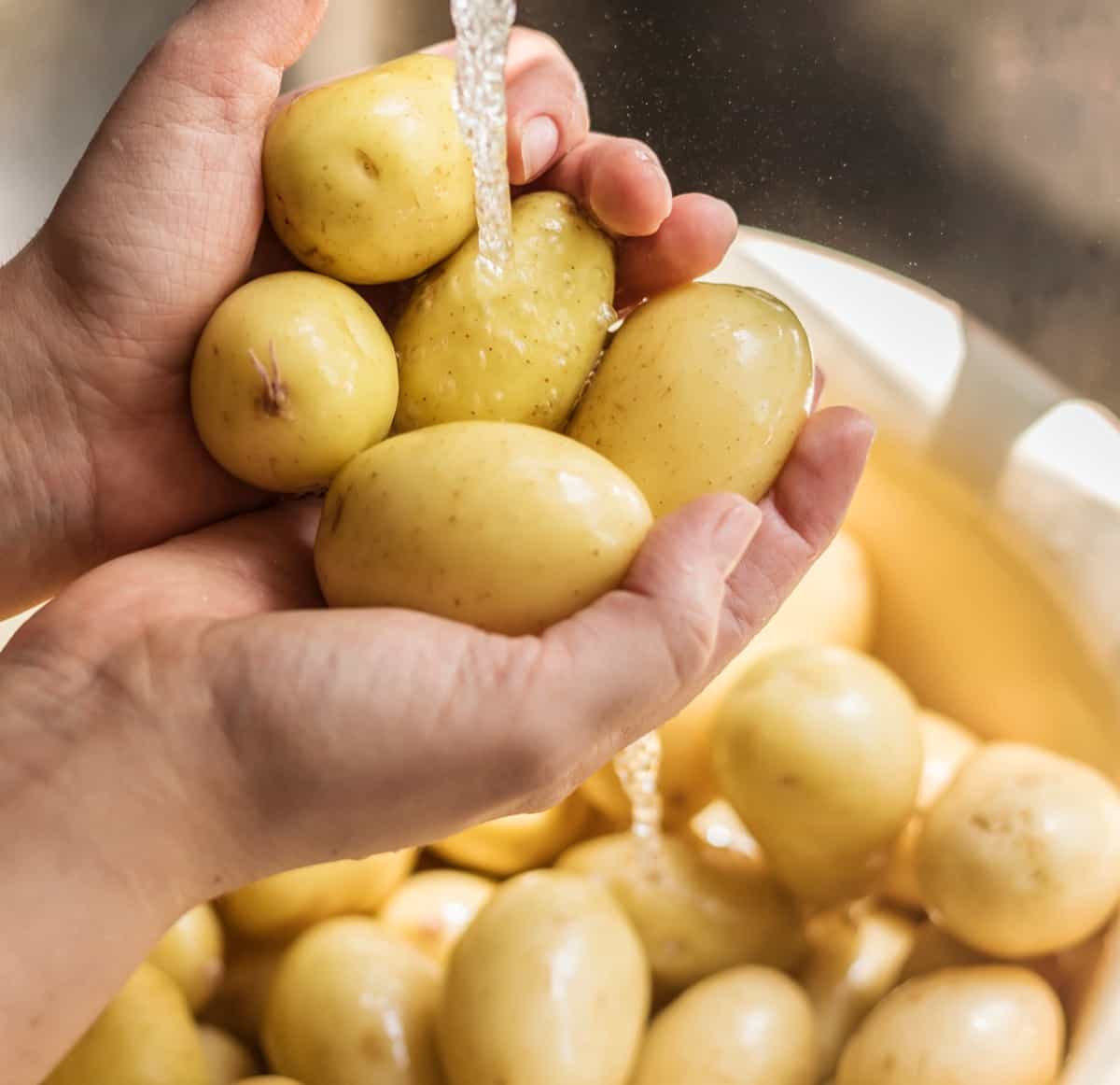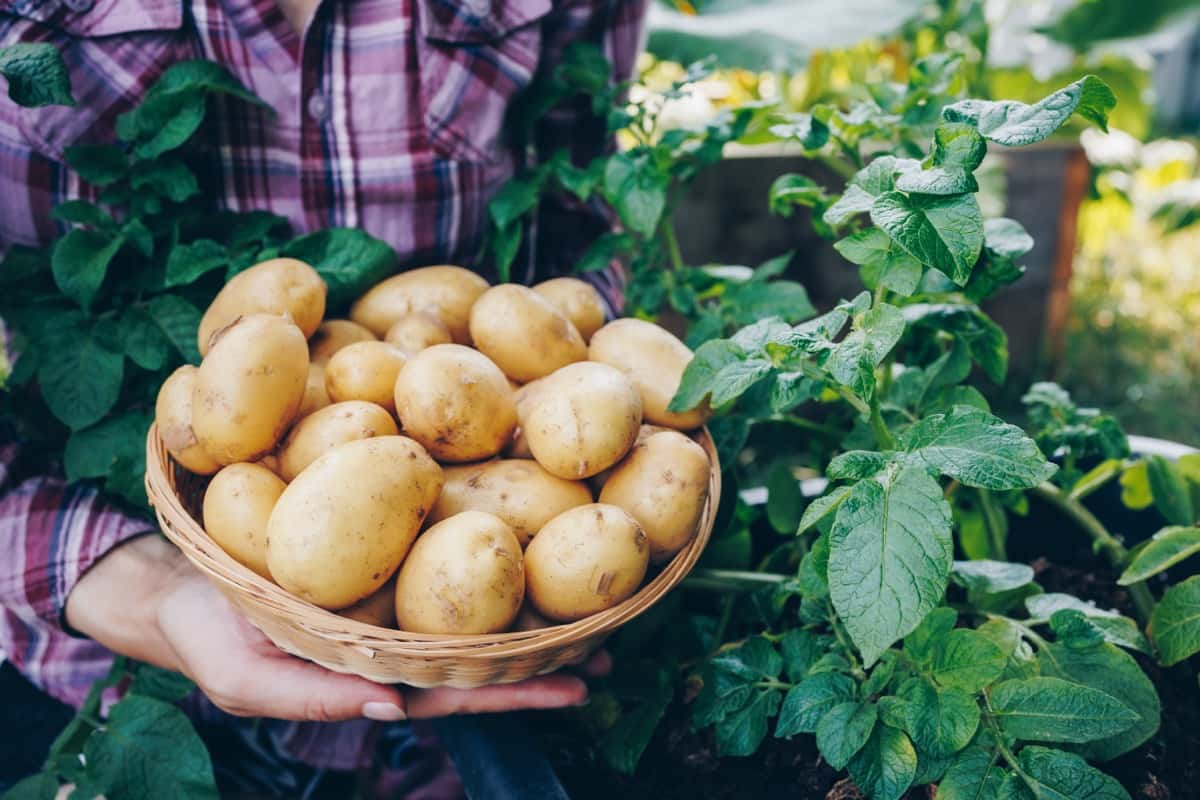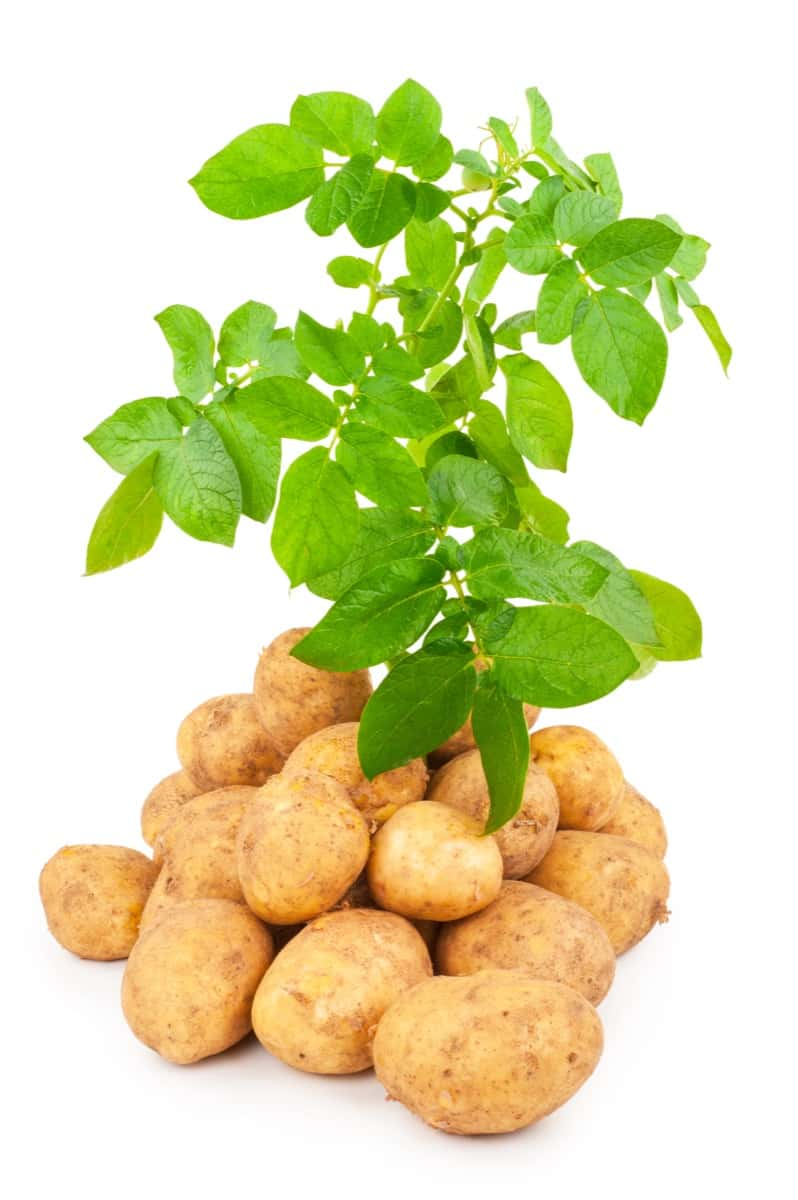The scientific name of Potato is Solanum tuberosum. Growing Potatoes in aquaponics offers a range of benefits that make it a beautiful option for home gardeners and commercial farmers alike. Growing Potatoes in aquaponics not only ensures a year-round supply but also promotes efficient use of resources like water and energy.

9 Essential Steps to Grow Potatoes in Aquaponics
Selecting the Right Aquaponic System for Potatoes Cultivation
The popular Aquaponic system for growing Potatoes is the media-based system, which uses a bed filled with a growth medium like gravel or clay pebbles. This type of system provides excellent support for Potato plants and allows their roots to access nutrients from both fish waste and the medium itself. Another system is the nutrient film technique (NFT) system, where a thin water film containing nutrients flows over plant roots suspended in channels.
While this method works well for leafy greens, it may not be ideal for Potatoes due to their need for more substantial root support. Alternatively, you can consider using a raft or deep-water culture (DWC) system that suspends potato plants on floating rafts in nutrient-rich water. This method allows easy access to nutrients while providing adequate root oxygenation.
Choosing the Best Varieties of Potatoes for Aquaponic Farming
You’ll want to choose varieties that have a shorter growing season as they tend to perform better in an aquaponic system. This means opting for early or mid-season Potatoes rather than late-season ones. Additionally, look for Potato varieties that are known for their high-yield potential. Some popular Potato varieties suitable for aquaponics include Yukon Gold, Red Pontiac, and Kennebec.
These varieties have proven themselves time and again in both traditional soil-based farming and hydroponics. Another factor to take into account is the size of the Potato tubers you’re aiming for. Some varieties produce smaller, fingerling-style Potatoes, while others yield larger baking-sized spuds. Consider your market demand or personal preferences when making this decision.
Essential Water Quality Parameters for Potatoes Growth in Aquaponics
In aquaponics, water quality plays a main role in the growth and development of Potatoes. Maintaining optimal water conditions ensures that your Potato plants receive the necessary nutrients to thrive. pH levels are critical. Potatoes prefer slightly acidic soil conditions ranging from 5.8 to 6.5.
Additionally, oxygen levels are crucial for healthy root development in Potatoes. Furthermore, maintaining proper dissolved oxygen (DO) levels is essential to support beneficial bacteria that convert fish waste into plant-available nutrients. Aim for DO levels around 5-7 ppm (parts per million) to promote efficient nutrient cycling.
Providing Essential Nutrients for Aquaponic Potatoes
Potatoes require a balanced mix of macronutrients and micronutrients to thrive and produce healthy tubers. The key nutrient that Potatoes need is nitrogen. Nitrogen plays a vital role in leaf development, which is important for overall plant growth. In an aquaponic setup, fish waste provides a natural source of nitrogen through the conversion of ammonia into nitrates by beneficial bacteria.
Potassium is another essential nutrient that helps with Potato tuber formation and overall plant health. It aids in water regulation within the plants, improves disease resistance, and enhances root development. In an aquaponics system, potassium can be derived from fish waste as well as supplemented using organic potassium-rich fertilizers. Phosphorus is necessary for strong root development in Potatoes.
In case you missed it: How to Grow Hydroponic Potatoes: A Comprehensive Guide

It helps with energy transfer within the plant and supports robust tuber growth. Fish waste also contributes phosphorous to the system; however, additional supplementation may be required depending on your water quality parameters. In addition to these macronutrients, Potatoes also benefit from receiving adequate amounts of calcium, magnesium, iron, and trace minerals like zinc and manganese.
Lighting Requirements for Growing Potatoes in an Aquaponic System
When setting up your aquaponic Potato farm, it’s important to ensure that your plants receive enough light throughout their growth cycle. Natural sunlight is ideal, but if you’re unable to provide sufficient natural light, artificial lighting can be used as a supplement. When choosing artificial lights for your aquaponic Potato farm, opt for full-spectrum LED grow lights. Positioning the lights correctly is also essential.
Ensure that they are placed at the appropriate height above the plants, allowing for an even distribution of light across all parts of the Potato plants. This will help prevent issues such as leggy or elongated stems. It’s important to note that Potatoes require about 12-14 hours of continuous light per day during their vegetative stage and 8-10 hours during their flowering stage. Therefore, it’s crucial to maintain consistent lighting schedules throughout each stage of growth.
Temperature and Climate Control for Optimal Potatoes Growth
Temperature and climate control play a crucial role in ensuring optimal growth of Potatoes in an aquaponic system. Potatoes thrive best in moderate temperatures, typically between 15°C and 21°C. Maintaining a stable and consistent temperature is essential for their development. Potato plants are sensitive to extreme heat or cold, which can adversely affect their growth. In addition to temperature control, maintaining the right humidity levels is also crucial for Potatoes’ well-being.
The ideal relative humidity ranges from 75% to 85%. This helps prevent excessive moisture loss through evaporation from leaves and prevents issues like wilting or leaf scorching. Proper air circulation within the aquaponic system is another aspect that shouldn’t be overlooked. Good airflow helps reduce the risk of diseases caused by stagnant air and ensures efficient transpiration, allowing nutrients to reach the plant parts effectively.
Planting and Spacing: Best Practices for Potatoes in Aquaponics
- Start by preparing the grow bed: Before planting, make sure the grow bed is well-prepared with a suitable growing medium such as perlite or coconut coir.
- Choose healthy seed Potatoes: Select seed Potatoes that are disease-free and have sprouts emerging from them. Cut larger seed Potatoes into smaller ones, ensuring each piece has at least two eyes for sprouting.
- Digging trenches or mounds: Depending on your preference, you can either dig trenches or create mounds for planting the seed Potatoes. Trenches allow for easier access during harvest, while mounds provide better drainage.
- Spacing considerations: Space out adequately to avoid overcrowding the plants, which can lead to competition for nutrients. Generally, aim for about 12-15 inches between each plant within rows, with approximately 2-3 feet between rows.
- Planting depth: Place the seed Potatoes in the trenches or on top of the mounds with their sprouts facing upwards. Cover them with a layer of soil, leaving only a small portion exposed above ground level.
- Mulching benefits: Consider mulching around your Potato plants once they start growing to help conserve moisture in the aquaponics system and suppress weed growth.
- Protect against frost: Potatoes are sensitive to frost damage, so be mindful of weather conditions and protect young plants by covering them, if necessary, during colder periods.
In case you missed it: Potato Companion Plants: What to Plant and What Not to Plant with Potatoes

Maintenance and Care
Taking proper plant care will ensure a healthy and bountiful harvest. Here are some important maintenance tasks to keep in mind. Regularly observe the water quality parameters such as pH levels, ammonia, nitrate, and dissolved oxygen levels. These parameters play an important role in maintaining a suitable environment for Potato growth.
Keep an eye out for any pests or disease signs that may affect your Potato plants. Inspect leaves and stems regularly for any unusual spots or discoloration. If you notice any problem, take immediate action with organic pest control ways or seek professional advice if necessary. Regular harvesting is key when it comes to caring for your Potatoes in aquaponics systems.
When and How to Harvest Potatoes in Aquaponics
Timing is important when it comes to harvesting Potatoes. The ideal time to harvest them is when the foliage starts turning yellow and dying back. This usually happens around 70-90 days after planting, depending on the variety you have chosen. To begin with, stop watering your Potato plants a few days before harvesting.
To begin the harvesting process, gently dig around the plant base using a garden fork or a shovel. Once you’ve removed all of your Potato plants from the aquaponic system, it’s time for another crucial step – curing. Curing helps toughen up their skins and prolong their shelf life. To cure your freshly harvested Potatoes, place them in a cool, dark space with good ventilation for about two weeks.
In case you missed it: Container Growing Sweet Potatoes: Starting from Scratch for Planting to Harvest

Conclusion
Potatoes are a versatile and staple crop that can easily be grown in aquaponics systems. With the right plant care, you can enjoy a bountiful harvest of fresh, organic Potatoes right from your backyard. Growing Potatoes in aquaponics allows for a more sustainable and eco-friendly approach. Aquaponic systems can be set up in small spaces, making them an ideal solution for urban farming or backyard gardens.
- Feed Your Flock for Less: Top 10 Tips to Save on Chicken Feed
- Ultimate Guide to Ossabaw Island Hog: Breeding, Raising, Diet, and Care
- Hatching Answers: The Top 10 Reasons Your Chickens Aren’t Laying Eggs
- Eggs and Economics: Breaking Down the Cost of Raising Backyard Chickens
- Defend Your Greens: Proven Methods to Keep Iguanas Out of Your Garden
- Ultimate Guide to Cinnamon Queen Chicken: A Comprehensive Guide for Beginners
- Ultimate Guide to California Tan Chicken: Breeding, Raising, Diet, Egg-Production and Care
- Ultimate Guide to Marsh Daisy Chicken: Breeding, Raising, Diet, and Care
- 10 Types of Chicken Farming Businesses You Can Start for Profits